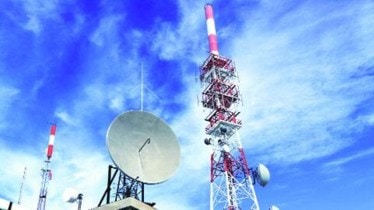At a time when the full potential of 5G is yet to be realised, the government has announced a ‘vision document’ for the next generation of telecom technology, 6G. The Bharat 6G document was released on March 22. While 100x faster speeds than 5G may be at least seven years away, Jatin Grover explains what 6G is, the potential gains, and other features of India’s 6G plans
What is 6G?
With the growth in data consumption and emerging use-cases of technology, telecom networks also go through upgrades to handle the increased bandwidth, faster speeds, and improve range or accessibility of connectivity. Sixth-generation or 6G telecom technology is an upcoming technology that will be built over the 5G technology. It will not only provide higher speeds but also reliable, ultra-low latency, and affordable solutions.
Also read: Spot the deep fakes: How to check if AI-generated image is original or not
Just as 2G/3G subscriptions yielded to 4G because of increase in content consumption and need for faster internet, 5G will ultimately make way for 6G. Industry will be the major user, especially remote-controlled factories, communicating self-driven cars, and smart wearables taking inputs directly from human senses.
What is the need for 6G?
While the Internet of Things (IoT) and industrial automation technologies are the main focus of 5G, the focus of 6G will be the convergence of the digital, physical, and human worlds. According to Nokia, 6G will be required to enhance solutions based on artificial intelligence and machine learning, extreme connectivity needs including sub-millisecond latency, building more secured and trusted technology, among others. As per India’s vision document, 6G will be useful in providing ubiquitous connectivity to rural areas at affordable rates, thereby bridging the connectivity void.
Simply put, while 6G technically does not exist today, it will be useful for a highly mature IoT scenario involving smart homes and smart cars, among others. Globally, there is a vision to transform connectivity to make big data analytics and holographic displays a norm when 6G is implemented in 2030s, the 6G vision document says.
What are the benefits for consumers?
With 100 times faster speeds at 1 Tbps compared to 5G, the 6G telecom era will provide its consumers far advanced broadband services, drastically better video quality, and improved gaming experience. Further, with leaps in smartphone research and development, the advanced features in these will also make 6G very useful for regular users.
At present, the total annual purchase of smartphones is higher than 160 million, with a user base of about 300 million Indian households, the vision document says. This means that every household today is buying smartphones at an average of one phone every two years. A similar amount is being spent annually on two-wheelers, suggesting that an average Indian finds a personal smartphone as valuable, and necessary, as a personal vehicle.
Also read: Amazon Kindle 11th Generation review: Much needed upgrade for budget-conscious buyers
6G for industry
6G for industries will have the biggest use cases in terms of pushing Industry 4.0 and Industry 5.0. With ultra-low latency and higher speeds, 6G will facilitate machine-to-machine and human-to-human interactions, involving use of virtual and augmented reality, mobile edge computing, among others. To strengthen R&D, startups will also be encouraged to come up with innovative solutions leveraging the 6G technology to address key verticals like transport, water, power grid, and renewables, etc.
India’s road map for 6G
The Centre is targeting a 6G launch by 2030. It has set up an apex council to oversee the project, focusing on standardisation, identification of spectrum for 6G, creating an ecosystem for devices and systems, determining finances for R&D, etc. Further, India has secured more than 127 patents on 6G from global institutions. The Bharat 6G Mission will be divided in two phases —over 2023-2025 and 2025-2030. In the first phase, the Centre will support proof of concept tests, etc, to explore ideas. The second will focus on fostering use cases for commercialisation.
The 6G vision also talks about a corpus of Rs 10,000 crore to facilitate various financial mechanisms such as grants, loans, fund of funds, etc.
* 2030: The Centre’s target for launch of 6g Telecom tech
* Rs 10,000 cr planned corpus to fund 6g-related innovation
* Two phases of Bharat 6G Mission, over 2023-25 and 2025-2030
* 100x the speed of 5G is expected from 6G
